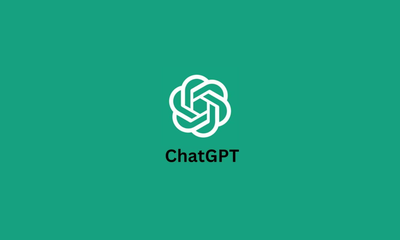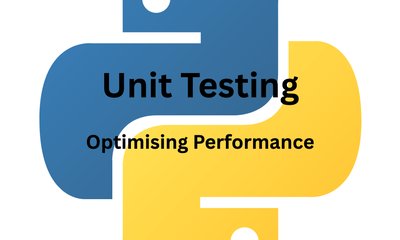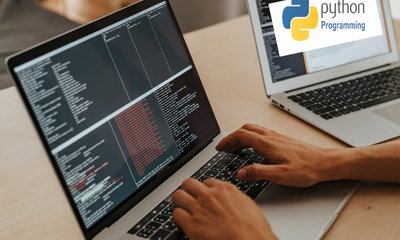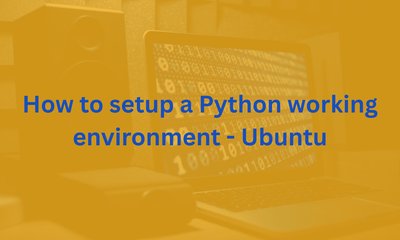Unleashing the Power of OpenAI Python ChatGPT: Transforming IT Outsourcing with Intelligent Conversational AI
By JoeVu, at: May 30, 2023, 10:16 a.m.
Estimated Reading Time: __READING_TIME__ minutes


Introduction
IT outsourcing has become a crucial aspect of businesses aiming to leverage external expertise in today's fast-paced world. Meanwhile, OpenAI's ChatGPT emerges as a game-changer, offering powerful conversational AI capabilities. In this blog post, we will explore the potential of OpenAI ChatGPT (specialized in Python).
1. Understanding OpenAI ChatGPT
Overview of OpenAI and its contributions to AI research
OpenAI, a renowned organization at the forefront of artificial intelligence research, has made significant contributions to the field. With a mission to ensure that artificial general intelligence (AGI) benefits all of humanity, OpenAI has developed cutting-edge models that have revolutionized the AI landscape.
Introduction to ChatGPT and its transformative role in conversational AI
One of OpenAI's groundbreaking models is ChatGPT, a language model specifically designed for conversational AI. ChatGPT has the ability to generate human-like responses and hold dynamic conversations with users, making it an valuable tool for a wide range of applications, including customer support, virtual assistants, and more.
2. Using OpenAI Python ChatGPT with Python
Can ChatGPT be used with Python?
Yes, ChatGPT can be seamlessly integrated with Python, enabling developers to harness its capabilities within their Python applications. This integration opens up a world of possibilities for creating intelligent conversational interfaces and enhancing user experiences.
How to use ChatGPT API for Python?
To utilize ChatGPT with Python, developers can make use of OpenAI's API, which provides easy access to the model's functionality. By making API calls using Python, developers can send prompts to ChatGPT and receive responses in real-time, enabling dynamic and interactive conversations.
How to create API with ChatGPT?
Creating an API with ChatGPT involves setting up a server that can handle HTTP requests. Developers can use frameworks like Flask or Django in Python to build a web application that interacts with the ChatGPT API. This allows for the creation of custom conversational AI systems tailored to specific needs and use cases.
Python ChatGPT example - with openai package
1. Open Terminal and run pip install openai to install openai
2. Type python to execute Python script below
import os
import openai
openai.api_key = "your openai api key" # collect it here https://platform.openai.com/account/api-keys
response = openai.Completion.create(
model="text-davinci-003",
prompt="what is Python programming language?",
temperature=1,
max_tokens=256,
top_p=1,
frequency_penalty=0,
presence_penalty=0
)
Exploring the concept of "prompts" and "max tokens" for controlling output
In ChatGPT, prompts are the messages or statements provided to the model to initiate a conversation. Developers can craft prompts to guide the model's responses and achieve the desired conversational flow. Additionally, the "max tokens" parameter allows developers to control the length of the generated response, ensuring it fits within certain constraints.
By utilizing prompts strategically and adjusting the max tokens limit, developers can shape the output of ChatGPT to align with specific requirements, maintaining context and improving the quality of responses.
3. Leveraging OpenAI Python ChatGPT for Enhanced Conversational AI
Customizing ChatGPT Responses
OpenAI Python ChatGPT offers the flexibility to customize and fine-tune the model's responses. By providing additional instructions or context in the prompts, developers can guide the model's behavior and ensure more accurate and contextually appropriate responses
model="text-davinci-003", # AI model
prompt="what is Python programming language?", # prompt
temperature=1, # control randomness
max_tokens=256, # maximum length of generated response tokens
top_p=1, # Control diversity
frequency_penalty=0, # How much personalize new tokens based on their existing frequence in the text so far
presence_penalty=0 # How much personalize new tokens based on whether they appear in the text so far
Implementing Interactive Conversations
With ChatGPT, developers can create interactive conversational experiences by engaging in back-and-forth exchanges with the model. By maintaining conversation state and using the appropriate API calls, developers can build chat-based applications that simulate realistic and engaging interactions with users.
Improving ChatGPT's Performance
To enhance the performance of ChatGPT, developers can experiment with different techniques such as temperature adjustment and top-k or top-p sampling. These techniques allow for the control of response randomness and can help generate more diverse and creative outputs.
4. Addressing Common Questions and Misconceptions
Can I use ChatGPT programmatically?
Absolutely! ChatGPT is designed to be used programmatically. With OpenAI's Python API, developers can seamlessly integrate ChatGPT into their Python applications, allowing for automated interactions and dynamic conversational experiences.
Is ChatGPT free?
While OpenAI offers free access to ChatGPT, there are also subscription-based plans for increased usage and additional features. The pricing details can be found on the OpenAI website, and developers can choose a plan that best suits their needs.
How to use ChatGPT API for free?
OpenAI provides a free tier for accessing the ChatGPT API, allowing developers to experiment and explore its capabilities. By signing up and following the usage guidelines, developers can enjoy the benefits of ChatGPT within the limits of the free tier.
How to use ChatGPT for free?
In addition to the API, OpenAI has made ChatGPT available for free usage on their website. Users can simply visit the OpenAI website and start a conversation with ChatGPT without the need for any API keys or additional setup.
5. Integrating ChatGPT with Python: Empowering IT Outsourcing
Streamlining Customer Support
By integrating ChatGPT with Python, businesses can enhance their IT outsourcing services by creating AI-powered virtual assistants. These virtual assistants can handle customer inquiries, provide instant support, and assist in troubleshooting common issues, improving customer satisfaction and reducing response times.
Automating Processes
With the power of Python and ChatGPT, IT outsourcing processes can be automated to increase efficiency. Developers can leverage ChatGPT's conversational abilities to create chat-based interfaces that interact with backend systems, automating tasks such as ticket routing, data retrieval, and status updates.
Enabling Voice over IP (VoIP) Functionality
Python's extensive libraries and ChatGPT's conversational capabilities make it possible to code VoIP functionality. By integrating Python-based VoIP libraries, businesses can develop voice-based communication systems, enabling seamless and efficient collaboration between clients and IT outsourcing teams.
Conclusion
OpenAI Python ChatGPT empowers IT outsourcing by offering intelligent and dynamic conversational AI capabilities. By integrating ChatGPT with Python, businesses can enhance customer support, streamline processes, and automate tasks effectively. As AI technology continues to advance, leveraging ChatGPT in IT outsourcing becomes essential for staying competitive and delivering exceptional services.
Reference:





